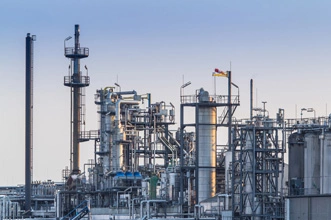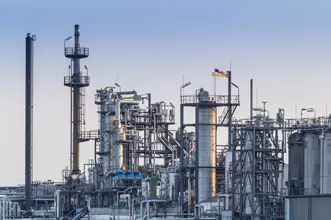Fertilizer Industry


Pressure vessels stand as indispensable assets within the Fertilizer Industry, orchestrating a secure and meticulously controlled milieu for the myriad chemical processes intrinsic to fertilizer production. Tailored as robust encasements, these vessels adeptly endure the rigors of heightened pressures and temperatures, facilitating the seamless synthesis and refinement of fertilizers. Here's an exhaustive exploration into the pivotal role of pressure vessels in the Fertilizer Industry:
1. Ammonia Synthesis:
Among its primary functions in the fertilizer domain, pressure vessels excel in ammonia synthesis, a cornerstone process for nitrogen-based fertilizer production. The venerable Haber-Bosch process, orchestrating the conversion of nitrogen and hydrogen into ammonia, mandates environments of elevated pressures and temperatures. Pressure vessels serve as the stalwart guardians of this reaction, confining and expediting it with precision.
2. Phosphoric Acid Production:
The synthesis of phosphoric acid, a linchpin component in phosphate fertilizers, necessitates engagements in corrosive, high-temperature reactions. Here, pressure vessels crafted from corrosion-resistant materials emerge as stalwart sentinels, ensuring the secure and efficient production of phosphoric acid.
3. Nitric Acid Production:
Nitric acid, another vital constituent within the fertilizer landscape, finds its genesis through processes demanding the fortification of pressure vessels. Essential for the production of ammonium nitrate fertilizers, these vessels contend with both the corrosive tendencies of nitric acid and the exigencies of elevated pressures requisite for certain reactions.
4. Potassium Fertilizer Production:
Within the realm of potassium-based fertilizers like potassium chloride, pressure vessels reign supreme, fostering a conducive environment for a plethora of chemical processes. Their utility lies in ensuring the safe manipulation of corrosive substrates and the cultivation of optimal conditions for chemical transformations.
5. Storage and Transportation:
Beyond their catalytic role in production, pressure vessels find utility in the storage and conveyance of fertilizers, safeguarding their integrity during warehousing and transit. By upholding controlled environments, they ensure the preservation and safe transport of these invaluable commodities.
Among its primary functions in the fertilizer domain, pressure vessels excel in ammonia synthesis, a cornerstone process for nitrogen-based fertilizer production. The venerable Haber-Bosch process, orchestrating the conversion of nitrogen and hydrogen into ammonia, mandates environments of elevated pressures and temperatures. Pressure vessels serve as the stalwart guardians of this reaction, confining and expediting it with precision.
2. Phosphoric Acid Production:
The synthesis of phosphoric acid, a linchpin component in phosphate fertilizers, necessitates engagements in corrosive, high-temperature reactions. Here, pressure vessels crafted from corrosion-resistant materials emerge as stalwart sentinels, ensuring the secure and efficient production of phosphoric acid.
3. Nitric Acid Production:
Nitric acid, another vital constituent within the fertilizer landscape, finds its genesis through processes demanding the fortification of pressure vessels. Essential for the production of ammonium nitrate fertilizers, these vessels contend with both the corrosive tendencies of nitric acid and the exigencies of elevated pressures requisite for certain reactions.
4. Potassium Fertilizer Production:
Within the realm of potassium-based fertilizers like potassium chloride, pressure vessels reign supreme, fostering a conducive environment for a plethora of chemical processes. Their utility lies in ensuring the safe manipulation of corrosive substrates and the cultivation of optimal conditions for chemical transformations.
5. Storage and Transportation:
Beyond their catalytic role in production, pressure vessels find utility in the storage and conveyance of fertilizers, safeguarding their integrity during warehousing and transit. By upholding controlled environments, they ensure the preservation and safe transport of these invaluable commodities.
